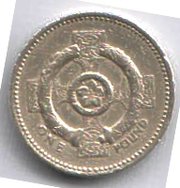Celtic cross
|
|
Ccross.png
- For Celtic Cross, the ambient/dub band see Celtic Cross (band)
A Celtic cross combines the cross with a ring surrounding the intersection. It is the characteristic symbol of Celtic Christianity, though it may have older, pre-Christian origins.
Origins
In Celtic regions of Britain and Ireland many free-standing upright crosses – or high crosses – were erected, beginning at least as early as the 8th Century. Some of these 'Celtic' crosses bear inscriptions in runes. There are surviving free-standing crosses in Cornwall and Wales, in the island of Iona and in the Hebrides, as well as the many in Ireland. Other stone crosses are found in Cumbria and the Scottish Borders, however some of these are of the Anglo-Saxon cross making tradition. The most famous standing crosses are the Cross of Kells, County Meath, and the crosses at Monasterboice, County Louth.
But the history of the crossed circle – or sun cross – is older even than this. In pagan North-West Europe, the symbol became the mark of the Norse god Odin. A form of this symbol – with the arms of the cross extended beyond the perimeter of the circle – was adopted by Christians who often extended the lower arm in the manner of a Christian cross. Though other explanations of the Christian combination of circle and cross have been made, it should be noted that the "Celtic" cross is rare outside the former extent of Odin's cult.
It should be noted that the Old English word for "cross" is "rood". The word "cross" in English derives only indirectly from Latin crux, crucis, passing through the intermediary of Old Norse krosse (modern kors). Linguistically it is striking that the pagan Norse raiders ("Vikings") should have impressed their word for "cross" on the Christianized Anglo-Saxons.
Political symbol
Celtic-cross.png
The cultural associations of the Celtic cross and the sun cross from which it's derived – with connotations of Christianity, Westernness, and old Aryan traditions – have since the 1960s encouraged the co-option of a stylized form as the emblem of several far-right groups, particularly in France, including the significantly-named Occident and the GUD.
In more recent decades the symbol has been adopted by the White nationalist political movement as a symbol for representation of all European Caucasian peoples.
This new symbolism has pretty much eclipsed the traditional one in France and many other European countries, including Greece (which has no Celtic minority). Some Irish people object to this use and association.
Celtic crosses are also associated with political groups advocating greater independence or other measures with respect to Celtic minorities (cf Breton nationalism).de:Keltenkreuz fr:Croix celtique nl:Keltisch Kruis pl:Krzyż celtycki

